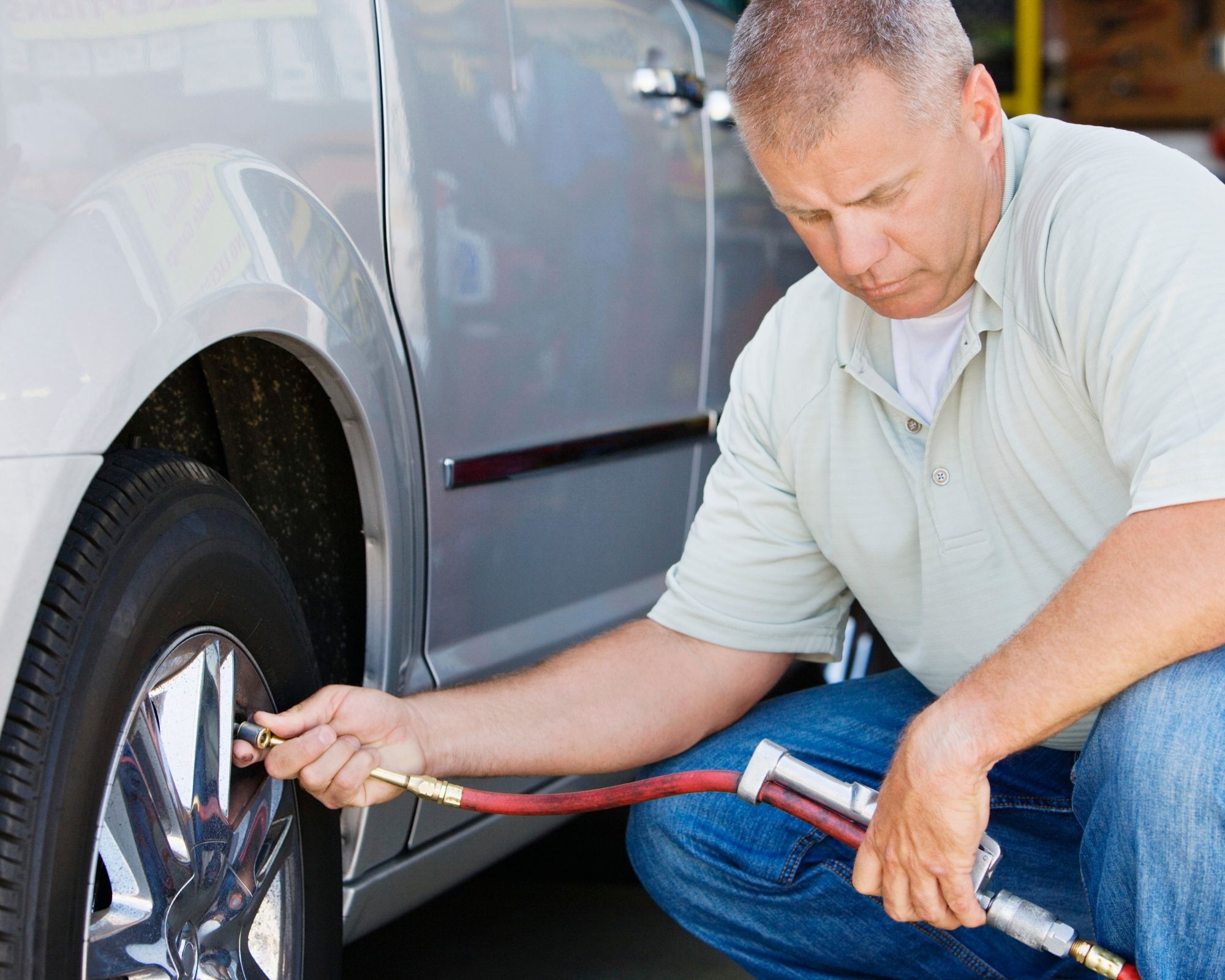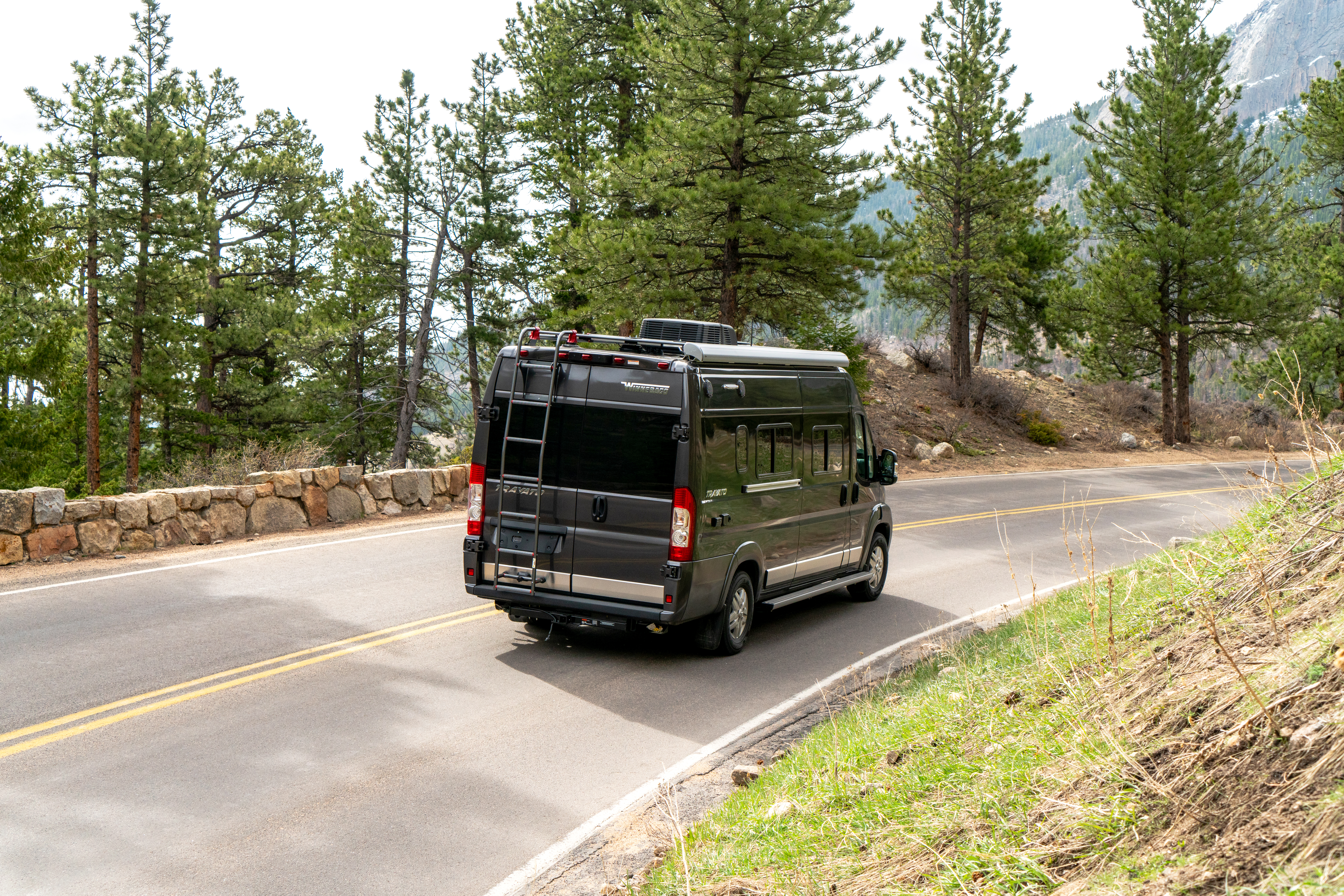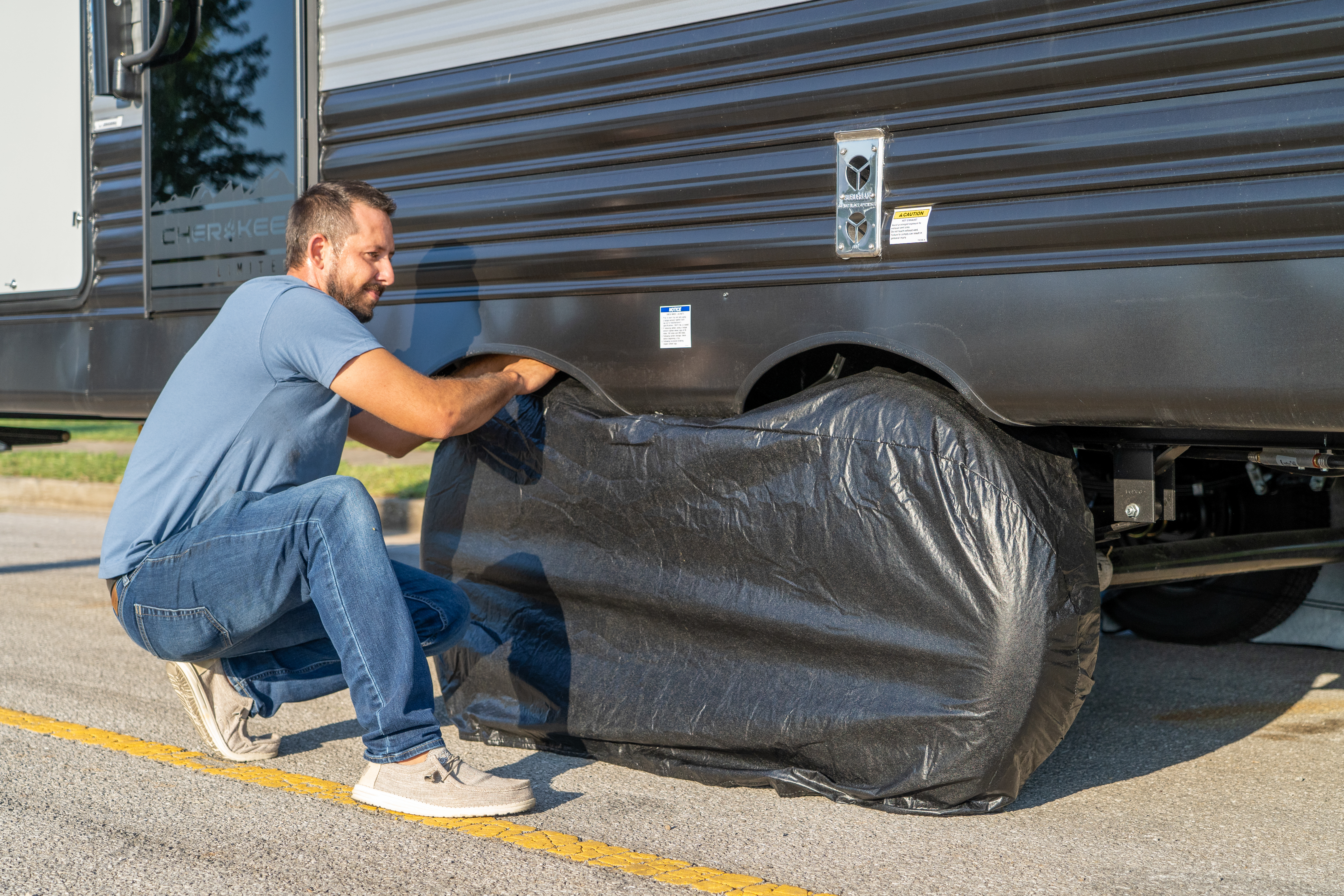WEnRV travel news, products, and industry trends
What’s the expected life of an RV tire?
Before you venture out on your next cross-country road trip it’s important to take stock of your RV’s tires. Unlike your typical car tire, motorhome tires are carrying tens of thousands of pounds, and will therefore require a slightly different approach.
How long will RV tires last? When should you replace an RV’s tire? How do you extend the life of your tires?
To help keep you safe and on the road longer, here’s a quick overview of how long RV tires last and how to get the most out of them.

How long do RV tires last?
Let’s get down the brass tacks. Depending on the size and mileage accrued, a well-maintained RV tire should last you around four or five years. With that, you should be able to squeeze out between 10,000 and 15,000 miles for smaller RV tires, and potentially upwards of 30,000 for larger vehicles.

Understanding your RV’s tires
Now, there are still a lot of variables when it comes to the overall health of your tire, and just because it’s within the recommended mileage doesn’t mean it’s safe to drive on. So, let’s get a little more granular and look at the different types of RV tires and compare their lifespans.
Types of RV tires
There are really only two types of RV tires worth noting: Special Trailer (ST) and Light Truck (LT).
ST tires were designed specifically for trailers and therefore have a sidewall stronger than what you’d find on a car or truck. They also have a higher load capacity which allows them to take on more stress while driving, which helps improve the handling of your vehicle.
LT tires are designed more for class A, B, and C rigs, but still offer excellent handling and stability, and have a stiff sidewall allowing them to provide more support even while carrying heavy loads.
Composition of your RV’s tires
Let’s get a little more granular and discern the difference between radial-ply and bias-ply tires.
More common with passenger vehicles and newer RVs, radial-ply tires are constructed with cords that run perpendicular to the direction of travel (or radially), allowing the tire to flex more and provide a substantially smoother ride, along with better handling.
Bias-ply tires are a little more common with older RVs or heavy-duty rigs, but they’re certainly still around. They have cords that run at an angle towards the direction of travel, resulting in a stiffer sidewall making the tire more durable and better resistant to punctures or impacts.
In terms of lifespan, a bias-ply tire will only last for a few years (or about 12,000 miles), while a radial tire will triple that.
Reading the tire sidewall
The best way to know what stage of life your tire is in is to look at the numbers on the sidewall. They may initially seem incoherent, but there’s actually a lot of helpful information to guage the size, load capacity, and what the proper inflation should be.
Tire size
The size of your tire is indicated by a series of numbers on the sidewall of the tire. The first number indicates the width of the tire (in millimeters), the second number shows the aspect ratio (height of the sidewall as a percentage of the width), and the third number will let you know the diameter of the rim (in inches).
For example, if you saw something like P210/60R18 you would be able to translate that the width is 210mm, the aspect ratio is equal to 60%, and the diameter is 18”.
Load range
Load range indicates just how much weight the tire can safely carry. You’ll see this number written in both pounds as well as kilograms.
Tire pressure
Maintaining the correct tire pressure is critical. Overinflated tires can cause a rough ride as well as uneven tire wear, while underinflated tires can lead to damage to the fender skirts and wheel wells, as well as cause excessive heat buildup leading to a blowout.
Make sure you have a trustworthy tire pressure gauge, and if you have a vehicle with dual rear wheels, you’ll want to make sure you have a gauge with an offset double head capable of reaching the inner and outer valves.
The correct tire pressure can be found on the sidewall written out in pounds per square inch (psi), as well as in the owner’s manual or on a sticker located on the vehicle near the driver’s seat.

Extending the life of your tires
The good news is that with proper care, you can certainly extend the life of your tires. Here are a few tips when it comes to tire longevity.
Inspect your tires regularly
Once every month or so (and certainly before any cross-country trip), make a point to check the pressure and tread of your tires. Look for punctures, cracks, or anything that looks off to prevent any blowouts or accidents.
Rotate your tires
It’s a good rule of thumb to rotate your tires every 5,000 to 7,500 miles. Over time your tires will wear down differently based on positioning, weight distribution, and general wear and tear, and rotating your tires will more evenly distribute and slow down their natural decay.
Keep your tires properly inflated
Similar to Goldilocks, you’ll want your tire pressure to be “just right.” An overinflated tire creates a higher risk of a blowout due to less surface area in contact with the road, while an underinflated tire will still break down quickly as it flexes and creates heat on the road.
Get an alignment
Even with the best navigation, your tires are going to encounter potholes, curbs, and other natural conditions that will gradually take a toll on your alignment. As a result, it’s recommended that you bring your RV in every 12,000 miles so they can adjust the angles of your wheels to where they need to be.
Install a tire pressure monitoring system
A tire pressure monitoring system (TPMS) lets you know your tire’s PSI at any given moment and will detect any anomalies – potentially allowing you to catch a flat early on and thus saving your tire.
Proper storage
If you’re winterizing your vehicle or trying to store a spare, make sure the tires are clean and stored indoors in an environment that’s free from any grease, gas, moisture, or sunlight. If you have to store them outdoors, try and keep them off the ground with a waterproof cover.
Replace when necessary
The general rule is to replace your tires every six years, as the rubber will naturally deteriorate over time, compromising their performance. That being said, if your tires are looking bald and worn down, or showing signs of damage (cracks, cuts, bulges, or punctures), it’s probably time to get them replaced.

Tread further
Even the best tires fall apart over time, but that doesn’t mean they should keep you off the road for long. Good Sam offers up to 5 years of tire and wheel coverage without breaking the bank. With the best nationwide coverage on tires and wheels, they’ll get you back on the road quicker. It’s road hazard coverage that won’t leave you flat.
The post What’s the expected life of an RV tire? appeared first on Good Sam Camping Blog.

Copyright
© Good Sam Camping Blog


